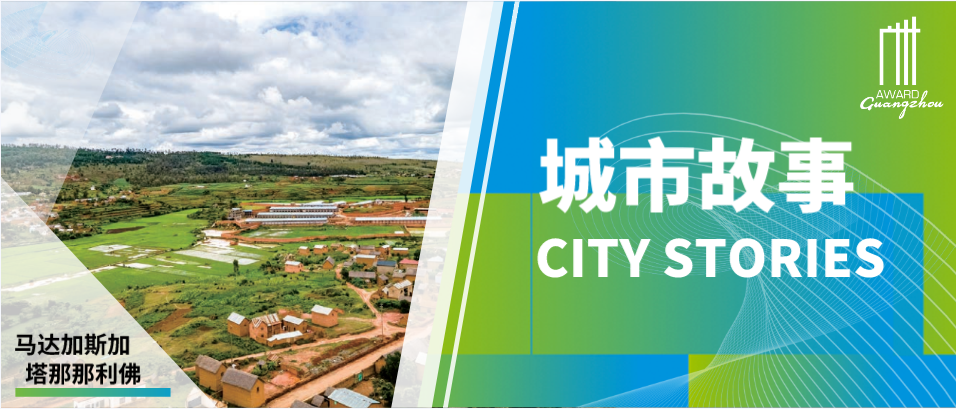Mexico City, Mexico
Program I: Mapatón CDMX
Background Information
The Law to make Mexico City an Open City
This law is a collaborative initiative that establishes the legal framework for an open government in Mexico’s capital. This act is the recognition of the principle of collaboration between government agencies and the civil society as a social right. The law also defines feedback, civic innovation, usability and proactive transparency as policy principles. The model is intended to guide government agencies in a gradual, incremental, measured and documented openness process.
Goals of the Initiative
A mobility issue of such scale cannot be tackled with a single effort. The most effective way of solving it is to create a long-term plan that cuts the problem into smaller pieces. The first and most important piece is data. In order to diagnose the issue and create adequate countermeasures (public policy, technological tools, projects), up-to-date and reliable data must be obtained. This data should not only cover the basics of the public transport system, but also provide urban planners, transport agencies, companies and citizen enough tools to build products, restructure systems and provide new or better services.
Parties and Partners to the Initiative
The Mapatón CDMX work group consists of a partnership between the government, NGOs, private industry and the community:
•Government:
Laboratorio para la Ciudad (Leader) – Government office with attributions that created and support the project inside the government.
Modal Transfer Centers Cetram – Government office in charge of regulating transportation hubs. They helped to communicate with concessional bus owners and utilized collected data to create better public policy.
Secretary of Mobility – Government office in charge of regulating transportation within the city.
•NGOs
PIDES Innovación Social (leading partner) – Logistic team and advisor
ITDP México – Advisor and beneficiary
Planeación & Desarrollo– Logistic advisor
M+urbano– Advisor
•Private Sector
Krieger Electronics (leading partner) – Consulting firm involved in product engineering, design, strategy, development and maintenance of the technology behind Mapatón CDMX.
Transconsult – Advisor
Ally – Advisor
Urban Launch Pad– Advisor
Resources Used for Implementation
•Funding
Most cash resources used in the project went into prizes and rewards for the citizens that gathered the most data during the mapping marathon—approximately $11,916 was invested in this purpose.
•Other resources
Partners and advisors of the project donated around 7,498 hours of work (excluding technical development), working spaces and miscellaneous materials.
On the technological side, 5,040 hours of work were required, most of which were donated by the team at Krieger Electronics.
Innovation for the Initiative
This initiative is revolutionary. Never before had a city’s government partnered with NGOs and the private sector to crowdsource a database of such proportion through citizen participation.
The project also managed to create an environment of trust, which resulted in enough citizen participation to gain critical mass and engage the city in a game that was not only fun, but built the first database of concessional public transport in Mexico.
Innovation has been applied in
•Tools and technology – Mapatón CDMX used state-of-the-art technology to minimize the costs of every process in obtaining semi-formal public transport data.
•Planning, design and implementation – The project design was a key element from every angle. From the graphical design that made it friendly and approachable, to the design of the discourse that rallied citizens to the cause (at a time when trust in governmental institutions are at an all-time low).
•Financing arrangement –Mapatón CDMX has been thought as a replicable and scalable tool that will allow developing countries with semi-formal systems to take their first step towards improvement.
Obstacles and Solutions for Innovation
All the concessional public transport companies and their employees saw it as a government initiative that could harm their businesses and their jobs. We minimized this sentiment through transparency and clear communication of the project’s objectives and results. Companies were included in the project from the beginning and invited to every event. This strategy resulted not only in mutual trust, but cooperation as well.
Some citizens also had preconceptions around the nature of the project, believing it didn´t have the city´s best interest at hand. These critics were convinced that the project was beneficial to the city through honest and fact-based responses. A good communication strategy was pivotal for the project to succeed.
Outcomes and Assessments
Mapatón has become an example of open government in Mexico City. This project is now a precedent of knowledge supporting open government.
Mapatón’s intentions were fulfilled. Laboratorio para la Ciudad designed a new methodology framework for future projects taking lessons from Mapatón as a starting point. This new framework will help further implementation the Open City Law.
The project also succeeded in laying the groundwork to articulate a collaborative ecosystem around concessional public transport.
Mapatón’s success is reflected in the following indicators.
•13 organizations were involved in the development of Mapatón (government, NGOs and private sector).
•12,538 work hours were invested in the project.
•4,235 users.
•690 teams were created in the mobile app.
•4,125 routes were mapped.
•2,765 routes were officially validated.
•708 routes were able to become into a GTFS format.
•8,153 followers in social networks.
•12 local and international newspapers reported Mapatón.
Praogram II:
Mexico City’s Open Contracting Initiative
Background Information
Mexico City has implemented this initiative under the following policy framework:
•An Open City Law, which aims to establish a legal framework to improve the availability of information about government activities for the local population; strengthen civic participation/citizen engagement; and make new technologies available that can facilitate open government, accountability, and the promotion of human rights
•Transparency and Access to Information Law (which has both national and local aspects)
••The Open Government Partnership’s initiative with the federal government through its National Action Plan
Goals of the Initiative
This initiative seeks to engage the public by making local contract information readily accessible. It accomplishes this goal by being user friendly and in an open-source format, which means that it can be replicated for any level of government, business, or across other models.
The change that is expected to be perceived long term through this open data and transparency initiative is a change in the cultural perception that government by default translates to corruption. This administration, and all to come, is asking to form an alliance with civil society, businessmen and women, CSO’s, and academia to make sure that public funds are used in their best interest to create a greater future together.
In the short to medium term, the goal is to have active citizen engagement and participation to make these types of tools enforceable at all levels and without time constraints. Another important goal to mention is that it is also necessary to make sure these types of tools are socialized as part of a new technological approach.
Parties and Partners to the Initiative
This innovation was the result of public-philanthropic and public-private partnerships. Bloomberg Associates is part of a global philanthropic enterprise that works with cities through its multiple practice areas, including the Municipal Integrity team. The Open Contracting Partnership is a private organization with the goal of opening up public contracting. The Mexico City team also worked closely with Open Contracting Partnership during the implementation and adaption of the OCDS and Gobierno Fácil, which is a company hired to develop a visualization of the data provided by the standard.
Resources Used for Implementation
Human resources:
For implementing the open contracting project, the human resources were from several institutions:
•The team from the Government of Mexico City, along with the Secretariat of Finance through its Directorate General of Administration and IT, and the Government Administrative Office, through its Directorate General of IT and Communications Governance and the General Coordination of Social Communications
•The Open Contracting Partnership (OCP), an organization dedicated to the open-up of public contracting through disclosure, data, and engagement assessed the CDMX
•Bloomberg Associates, through its Municipal Integrity team
•The Mexican Institute for Competitiveness, an investigation center dedicated to improving public policies in Mexico contributed recommendations, observations, and consulting
Financial resources:
Gobierno Fácil, a company dedicated to transforming open data into useful tools to improve transparency, was hired after the implementation of the standard with the goal of developing a visualization of the data it provided.
Innovation for the Initiative
The initiative is definitely revolutionary. The Open Contracting project of Mexico City is a “game changer,” because it promotes even more transparency and accountability at the different levels of the local government like heads of institutions, the middle class, and operators. The implementation of the Open Contracting Data Standard in Mexico City is totally revolutionary, because the city is the first in the world to implement the standard in its entirety. The city’s 21st open contracts portal is also groundbreaking in its design and content.
Innovation has been applied in
In Mexico City, the Open Contracting project is being applied primarily in governance and administration focusing specially in transparency, accountability, digital tools, and public technology.
Obstacles and Solutions for Innovation
The most difficult obstacle for the implementation of this initiative is changing the vision and mentality of the public administration. It must evolve from a traditional, paper based mentality to an electronic and digital one.
Outcomes and Assessments
The level of transparency offered by this initiative will allow an increase in competition for public contracts, attraction of new businesses, and greater citizen access to -- and utilization of -- contract data. From now on, information on public contracts will be freely available from the planning stage to implementation, allowing citizens to better understand and monitor public spending.
Methods Applied
To improve the chances of attaining the desired outcome with the Open Contracting Initiative, the Government of Mexico City had to develop different tools and methods such as:
•Workflows: it was necessary for the work teams to develop a good communication strategy between them no matter where or what they were working on. This communication strategy allowed them to establish workflows for every step of the project so everyone could know what the next step is and who is responsible for it.
•New incentives: this initiative works as a motivator for transparency and accountability for the city. The portal is a call to every citizen to monitor how public resources are spent. This project is a new way to face corruption.
•New technology: the government of Mexico city had to train its employees so they would know, understand, and administer the GRP and thus the input was correct in the system that feeds the open contracting portal.
-
 In Focus | The World Earth Day: Planet vs. Plastics
In Focus | The World Earth Day: Planet vs. Plastics -
 Urban Innovation in China | Shenzhen: How to Maintain Momentum to Achieve Carbon Peak by 2030 While Leading Green and Low-Carbon Development?
Urban Innovation in China | Shenzhen: How to Maintain Momentum to Achieve Carbon Peak by 2030 While Leading Green and Low-Carbon Development? -
 City Stories | Antananarivo, Madagascar: Building Resilience in the City Food System
City Stories | Antananarivo, Madagascar: Building Resilience in the City Food System -
 In Focus | International Women’s Day: Building a Women-Friendly City
In Focus | International Women’s Day: Building a Women-Friendly City























 Tel: +86 20 3780 4434
Tel: +86 20 3780 4434 Email: info@guangzhouaward.org
Email: info@guangzhouaward.org Address: Rm 1609, FuLiXinTianDi, No.307 Guangzhou Dadao Zhong, Yuexiu District, Guangzhou, Guangdong, 501600, PRC
Address: Rm 1609, FuLiXinTianDi, No.307 Guangzhou Dadao Zhong, Yuexiu District, Guangzhou, Guangdong, 501600, PRC




